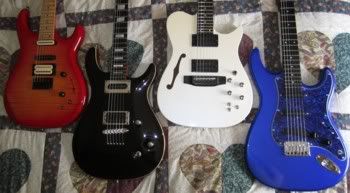5901B-G2112.
If you're wondering what a TPW cell is, here's a pic:

And here's some of what our catalog has to say:
The triple point of water (TPW) is not only the most accurate and fundamental temperature standard available, it?s also one of the least expensive and simplest to use.
Water cells are essential!
Triple point of water cells fill four critical purposes. First, they provide the most reliable way to identify unacceptable thermometer drift between calibrations?including immediately after a calibration if the thermometer has been shipped. Interim checks are critical for maintaining confidence in thermometer readings between calibrations. Second, they provide a critical calibration point with unequaled uncertainties.
Third, for users who characterize probes using ratios (that is, they use the ratios of the resistances at various ITS-90 fixed points to the resistance of the thermometer at the triple point of water, indicated by ?W?), interim checks at the triple point of water allow for quick and easy updates to the characterizations of critical thermometer standards, which can be used to extend calibration intervals.
And lastly, the triple point of water is where the practical temperature scale (ITS-90) and the thermodynamic temperature scale meet, since the triple point of water is assigned the value 273.16 K (0.01 ?C) by the ITS-90 and the Kelvin is defined as 1/273.16 of the thermodynamic temperature of the triple point of water.
Good triple point of water cells contain only pure water and pure water vapor. (There is almost no residual air left in them.) When a portion of the water is frozen correctly and water coexists within the cell in its three phases, the ?triple point of water? is realized. Hart water cells achieve this temperature with expanded uncertainties of less than 0.0001 ?C and reproducibilities within 0.00002 ?C.
In simple terms, water cells are made from just glass and water, but there?s much more to it than that!
For starters, that?s not just any water in there.
Heavy water
Hart cells contain carefully and repetitively distilled ocean water and are meticulously evacuated and sealed to maintain an isotopic composition nearly identical to the international standard, ?Vienna Standard Mean Ocean Water,? or ?VSMOW.?
The oxygen atoms found in most water are predominantly comprised of eight protons and eight neutrons (16O). Some oxygen atoms, however, have an extra neutron (17O) or two (18O). Similarly, the hydrogen atoms in water normally contain only a single proton (1H), but sometimes contain a neutron also (2H), resulting in ?heavy? water. These isotopes coexist in varying proportions in ocean water, polar water, and continental water, with ocean water being the heaviest.
The ITS-90 recommends that water cells be made from water with ?substantially the isotopic composition of ocean water.? Research has shown that TPW errors associated with isotopic composition can be as large as 0.00025 ?C. The uncertainty contribution from VSMOW errors in Hart cells is less than ? 0.000007 ?C. That?s seven micro-Kelvin!
Hart offers two options for verifying the isotopic composition of any purchased water cell, both at nominal costs. We can submit to a testing laboratory a sample of water taken from your own cell (after it was completely manufactured, so you get a valid comparison) and give you the test report. Or we can send that water sample to you in a sealed ampoule for you to conduct your own tests. We can even provide multiple samples from the same cell (virtually as many as you?d like) so you can check for changes over time.
Impurities
Further, the potential for errors due to water impurity is even greater than the errors from isotopic composition. Hart cells undergo multiple distillation processes and utilize special techniques to retain water purity. Among other things, our primary standards scientists are able to connect quartz cells directly to the glass distillation system without using coupling hardware that may invite contamination.











